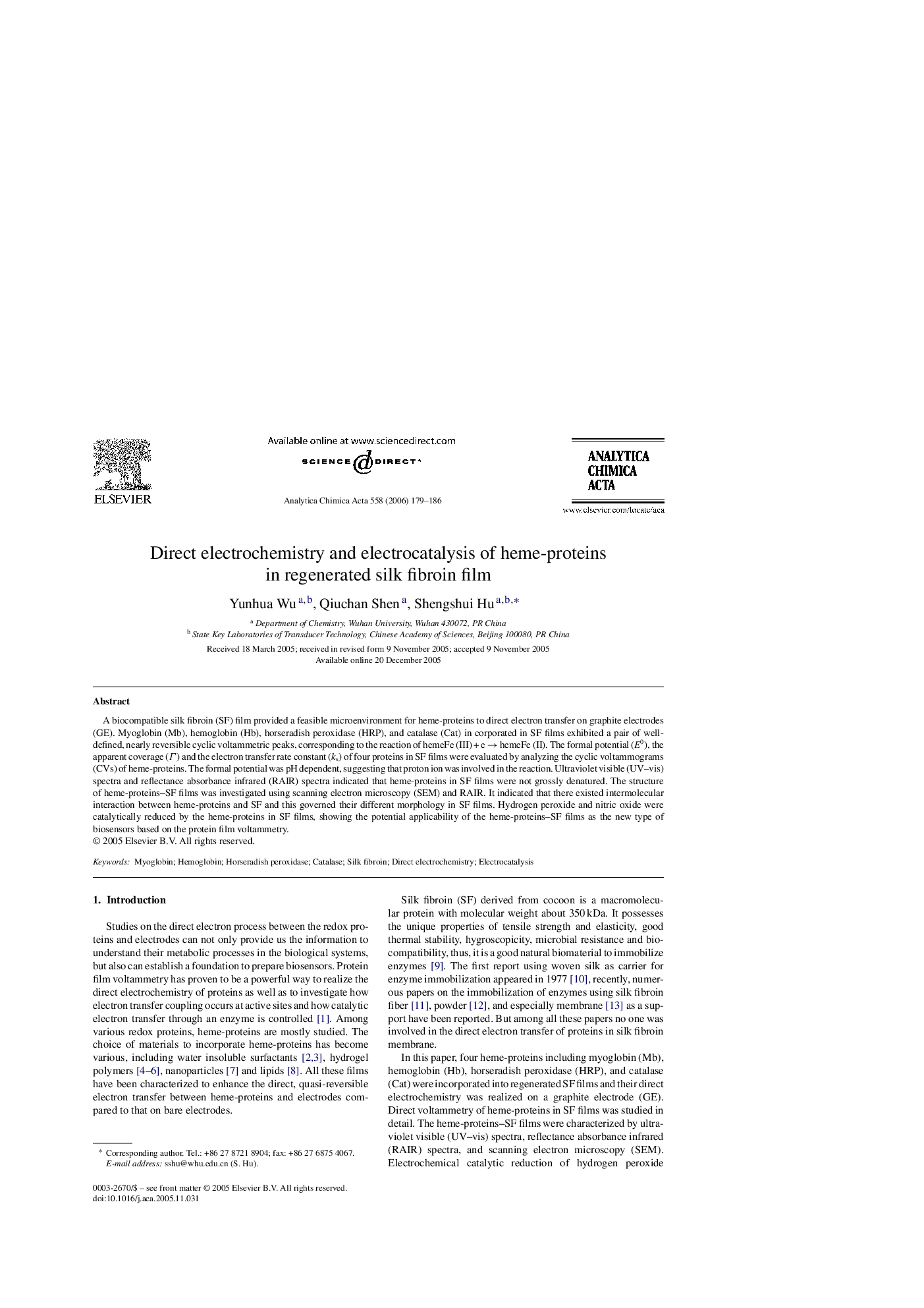| Article ID | Journal | Published Year | Pages | File Type |
|---|---|---|---|---|
| 1172537 | Analytica Chimica Acta | 2006 | 8 Pages |
A biocompatible silk fibroin (SF) film provided a feasible microenvironment for heme-proteins to direct electron transfer on graphite electrodes (GE). Myoglobin (Mb), hemoglobin (Hb), horseradish peroxidase (HRP), and catalase (Cat) in corporated in SF films exhibited a pair of well-defined, nearly reversible cyclic voltammetric peaks, corresponding to the reaction of hemeFe (III) + e → hemeFe (II). The formal potential (E0), the apparent coverage (Γ) and the electron transfer rate constant (ks) of four proteins in SF films were evaluated by analyzing the cyclic voltammograms (CVs) of heme-proteins. The formal potential was pH dependent, suggesting that proton ion was involved in the reaction. Ultraviolet visible (UV–vis) spectra and reflectance absorbance infrared (RAIR) spectra indicated that heme-proteins in SF films were not grossly denatured. The structure of heme-proteins–SF films was investigated using scanning electron microscopy (SEM) and RAIR. It indicated that there existed intermolecular interaction between heme-proteins and SF and this governed their different morphology in SF films. Hydrogen peroxide and nitric oxide were catalytically reduced by the heme-proteins in SF films, showing the potential applicability of the heme-proteins–SF films as the new type of biosensors based on the protein film voltammetry.
